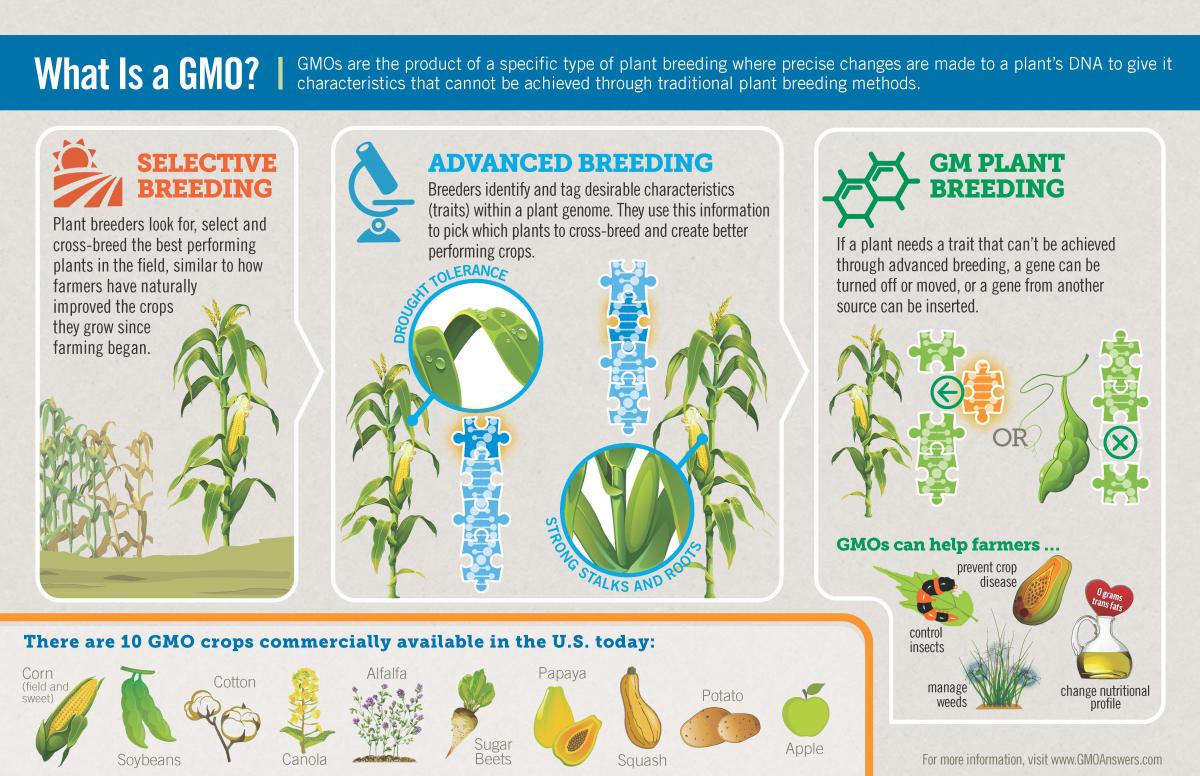 |
| GMO |
What are GMOs? Are GMOs safe? Why do farmers grow GMO crops? We know there are a lot of questions regarding GMOs, Genetically Modified Organisms. Let’s start with the basics.
What Are GMOs?
When people refer to genetically modified organisms - GMOs - they are referring to crops developed through genetic engineering, a more precise method of plant breeding. Genetic engineering, also referred to as biotechnology, allows plant breeders to take a desirable trait found in nature and transfer it from one plant or organism to the plant they want to improve, as well as make a change to an existing trait in a plant they are developing. Some examples of desirable traits commonly transferred include resistance to insects and disease and tolerance to herbicides that allow farmers to better control weeds.

Why Grow GMOs?
GMOs are created to achieve a desired trait, such as resistance to a pest or tolerance to drought conditions. The 10 genetically modified crops available today include: alfalfa, apples, canola, corn (field and sweet), cotton, papaya, potatoes, soybeans, squash and sugar beets. GM crops were created for:
- Insect resistance. This category of traits provides farmers with season-long protection against target pests, reduces the need for pesticide applications, and lowers input costs.
- Drought tolerance. GM crops that express drought tolerance have better moisture retention and can better endure drought conditions without the need for additional irrigation.
- Herbicide tolerance. Crops developed to tolerate specific herbicides allow farmers to fight weeds by applying targeted herbicides only when needed and enable them to use conservation tillage production methods that preserve topsoil, prevent erosion, and reduce carbon emissions.
- Disease resistance. Through genetic engineering plant breeders can enable plants to resist certain diseases, like the papaya ringspot virus (PRSV). The GM Rainbow Papaya, developed to be resistant to PRSV, allowed Hawaiian papaya farmers to recover from an outbreak of this devastating disease that crippled their industry.
- Enhanced nutritional content. Genetically modified soybeans with an enhanced oil profile, much like olive oil, have been developed and are longer lasting and trans-fat free.
- Reduced food waste. Genetic engineering has been used to modify potatoes and apples in order to eliminate superficial browning and bruising (potato only) when the produce is cut or handled. These traits can help reduce the amount of produce thrown away by producers, processors, retailers and consumers.
- Improved manufacturing processes. Certain biotech corn varieties enable more efficient biofuels production by improving the process through which cellulose and/or starch is broken down and converted to fuel. This helps reduce the environmental impact of the manufacturing process by decreasing the amount of water, electricity, and natural gas needed to produce biofuel.
What Crops Are GMOs?
The 10 genetically modified crops available today include: alfalfa, apples, canola, corn (field and sweet), cotton, papaya, potatoes, soybeans, squash and sugar beets.









No comments:
Post a Comment